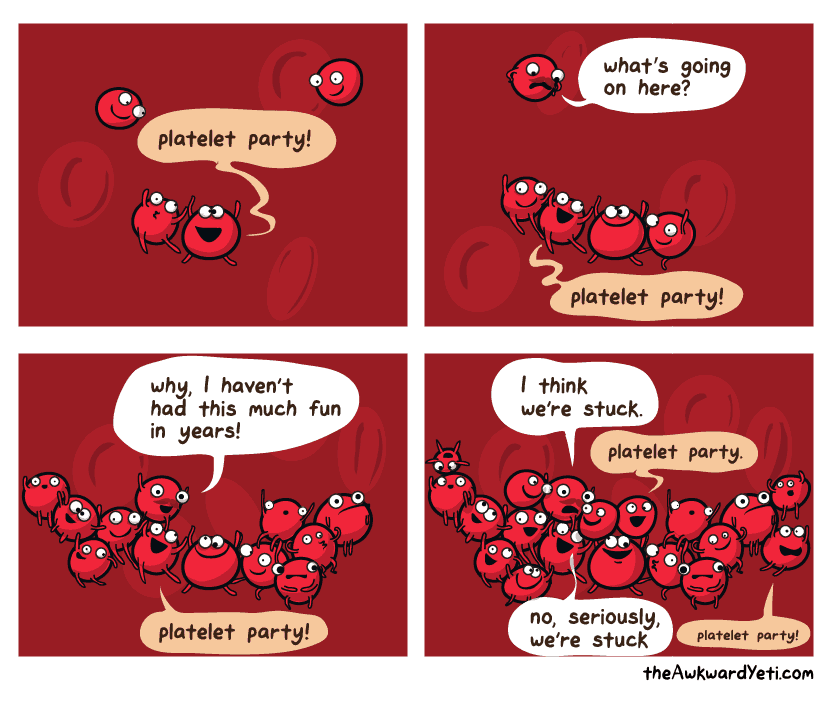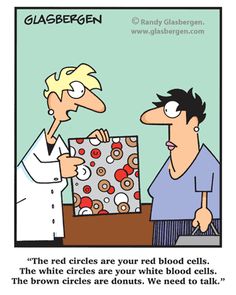Your blood is constantly flowing through blood vessels. Your heart is responsible for pumping blood through the arteries to reach the vital organs and cells in the body. The blood is circulated through the vessels and then returned to the heart through the veins. When blood vessels become damaged, from a cut, scrape, or injury, the blood naturally clots as a way for the vessel to repair itself.
If Clotting is Natural, Why is it a Concern?
There are plenty of reasons that blood clots can form. Blood clots can develop inside small veins near the skin’s surface and are referred to as superficial phlebitis. When this happens, the skin becomes red, swollen, and sometimes painful. Clots that form inside larger veins are known as deep vein thrombosis and often result in widespread symptoms in the area in which the clot is formed (i.e. leg, heart, or lungs)
Blood Clots Can Cause Damage to the Organs
Blood clots can be very dangerous, particularly if they break away and start spreading to other parts of the body. For example, a blood clot located in a large vein (deep vein thrombosis) can break off and travel to the lungs which could lead to a serious condition known as pulmonary embolism. Clots that develop in the heart chambers can travel to the brain, causing a stroke or a heart attack as it restricts the flow of blood through the arteries.

Who is At Risk?
Aside from an injury, there are several factors and preexisting medical conditions that can attribute to clotting. You may be at risk of blood clots if:
- You had surgery recently
- You take certain medications with clotting as a side effect (oral contraceptives, hormone therapy medication, or cancer medication)
- You have a bump or a bruise
- You’re over the age of 65
- You’re overweight (obese)
- You smoke
- You’re confined to a bed (limited movement)
- You’ve had clots before
- You have heart complications
- You have varicose veins
- You recently suffered a stroke
- You have a familial history of clotting
- You’ve taken long trips (such as a long flight on a plane)
What Can You Do to Prevent or Treat Clots
If you believe you have a blood clot, it is extremely important that you visit a medical professional for proper diagnosis and treatment. Since clotting can be dangerous, you do not want to try self treatment until you’re sure there is no risk to your health. Below are some tips to prevent and or treat clots:
- Use Support Products – The key to preventing clots is to improve circulation or blood flow throughout the body. Investing in support products such as anti embolism hose for women and men can be a great start. Such compression garments apply a gentle amount of pressure to the leg/hip area allowing for blood to move more freely throughout the body.
- Get Active – immobility can be a huge culprit in developing blood clots. If you want to prevent clotting, staying active is the way to go. If you work in a place that requires you to sit for hours, get up and walk around from time to time. Getting at least 10,000 steps in per day should help improve circulation.
- Maintain a Healthy Weight – Weight management will be important if you’ve been diagnosed with blood clots. Exercising as well as eating the proper foods can help to keep your weight under control.
- Quit Bad Habits – If you’re a smoker who has been told they have a clot or are at risk for clotting, quitting can greatly decrease your chances of developing clots in the future. There are plenty of ways to quit smoking including gum, patches, therapy, and more.
- Read Medications – Be sure that you know what the side effects are for medications that you’re taking. If you notice that one of the side effects is clotting, talk with your doctor to find out what testing will be done to ensure you don’t develop clots while on the medication.
- Know the Signs – Last but not least, make sure that you pay attention to the signs of a blood clot. The sooner you can get medical treatment, the less likely the clot is to cause significant harm.
Taking the proper steps to treating or preventing clots can ultimately be what saves your life. While finding out that you have a clot can be scary, it is important for you to reach out to a doctor for medical attention right away. While some clots can be severe in nature, some can be treated with medication and lifestyle changes.

